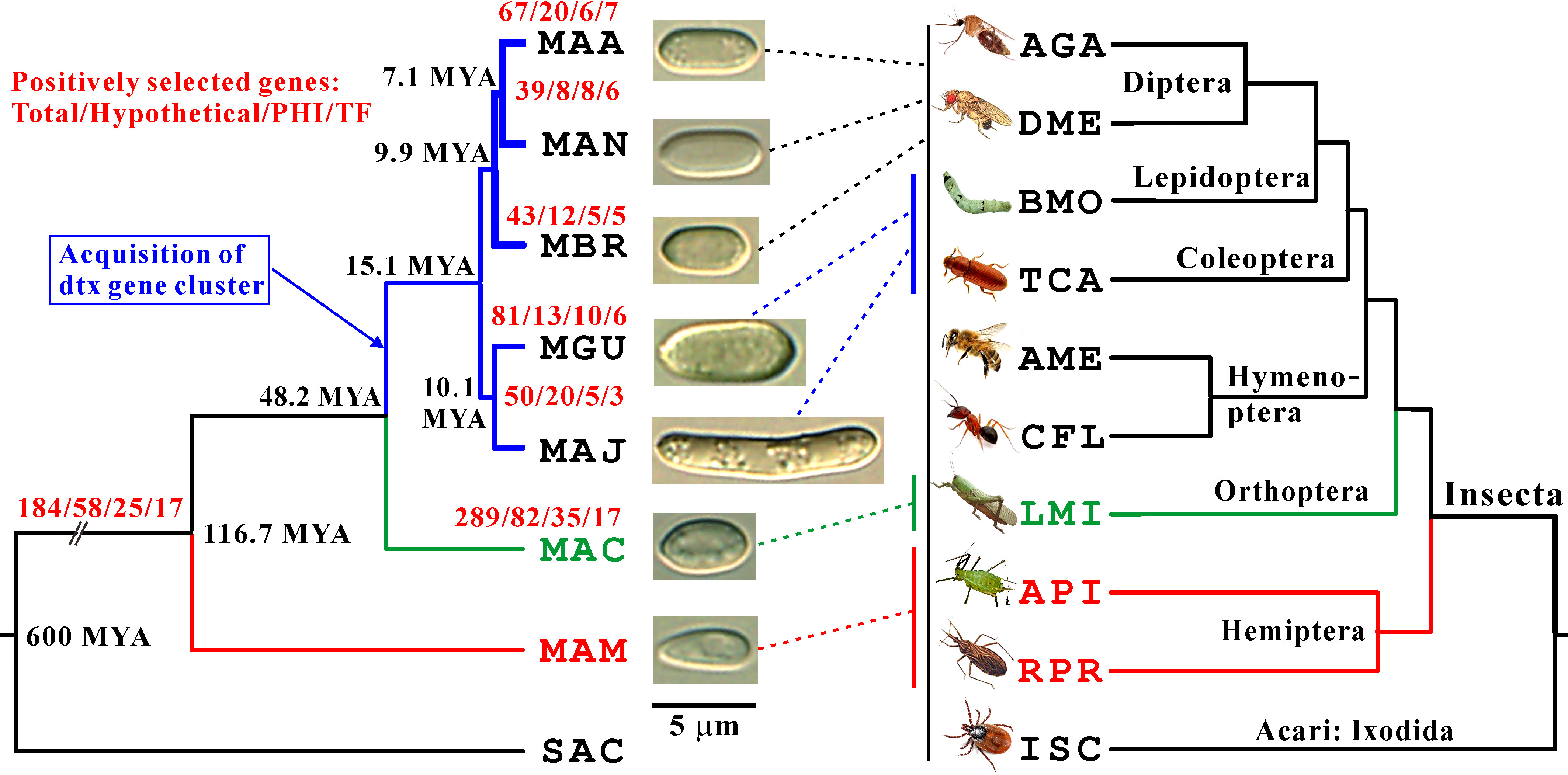The genetics and evolution of insect fungal speciation and host adaptation
There are around a thousand of known fungal species capable of killing insects, which play important roles in maintaining the densities of different insect populations in nature. The species of Metarhizium and Beauveria genera have been developed as promising and environmentally friendly insect biocontrol agents.
The
Metarhizium genus contains 12 species that each has different host ranges including the species specific to particular insect host order, those with intermediate host ranges and the generalist species being able to kill a broad range of insects. There are longstanding and remaining fundamental questions including:
whether generalization or specialization to particular hosts is the ancestral condition, can we identify the existence of transitional forms, and what are the underlying molecular mechanisms drivingspeciation? Comprehensive genomic analysis of seven
Metarhizium species revealed a directional speciation trajectory from specialists to transitional species and then to generalists that paralleled insect evolution. This diversification was coupled with protein family expansion, genome structure rearrangement and the changing of sexual life style, especially the expansions of GPCR and HET protein families in generalists that would be associated with host recognition and the reinforcement of reproductive isolation to accelerate the speciation processes. This study also indicated that the pan-genome of
Metarhizium is open, suggesting the possibility of new species divergence. The identification of existing transitional species further supports the theory of speciation continuum. This work entitled “The trajectory and genomic determinants of fungal pathogen speciation and host adaptation” has been published online in
PNAS on November 3, 2014 (
http://www.pnas.org/content/early/2014/10/29/1412662111).
This work was supported by the Strategic Priority Research Program of Chinese Academy of Sciences (XDB11030100) and the National Nature Science Foundation of China (31225023).

